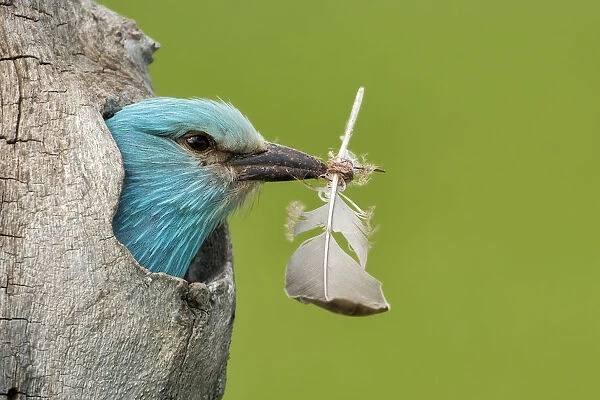The European roller is a striking bird with vivid plumage. Most of its body is bright blue, while its wings and back are brown. Its black eyes and beak stand in stark contrast to its vibrant feathers.


This bird is commonly found in open countryside and woodland edges across Europe, North Africa, and Western Asia. They migrate to sub-Saharan Africa to avoid the cold winters.
European rollers usually live alone or in pairs. They nest in tree cavities or holes in cliffs. The breeding season starts around May, with females laying between 4 to 6 eggs. Both parents participate in incubating the eggs and feeding the young.




The diet of the European roller primarily consists of large insects such as grasshoppers, beetles, and centipedes, but they also eat small lizards, frogs, and other small animals.
The European roller is currently classified by the International Union for Conservation of Nature (IUCN) as a species of Least Concern, although its numbers have declined in some areas due to habitat loss and pesticide use.



The European roller plays an important role in the ecosystem by controlling insect populations, helping to maintain natural balance. They also contribute to the natural landscape’s aesthetic value.
In summary, the European roller is not only a beautiful bird but also plays a crucial role in maintaining ecological balance. Protecting and maintaining its population is essential for ensuring biodiversity and the health of ecosystems.